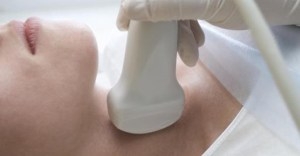US thyroid and parathyroid

Thyroid ultrasound is the imaging test for choice for thyroid and parathyroid gland disorders, and its usefulness in assessing cervical lymph nodes and salivary glands is important.
The reasons for which an endocrinologist or physician usually seeks this examination is to find cervical swelling, or symptoms compatible with hyperaemia or hypothyroidism (sweating, nervousness, high weight gain or weight loss, fatigue, exhaustion).
The thyroid gland is controlled for its dimensions, parenchyma homogeneity or not, and presence of nodules. Typical conditions diagnosed with thyroid ultrasound are nodular goiter, Hashimoto's thyroiditis, neoplasia, etc. Thin needle puncture (FNA) puncture can be performed under ultrasound guidance.
Also, parathyroid adenomas are diagnosed with thyroid ultrasound. With cervical ultrasound, the presence of cervical lymph nodes is checked and their size and shape assessed. The salivary glands (parotids, submandibular glands) are tested for inflammation, ulceration or focal lesions.
Thyroid ultrasound does not require any preparation on the part of the patient. The subject is lying down on the back while it is recommended to place a small cushion under the shoulders resulting in dorsal bending of the head allowing for better gait approach.






